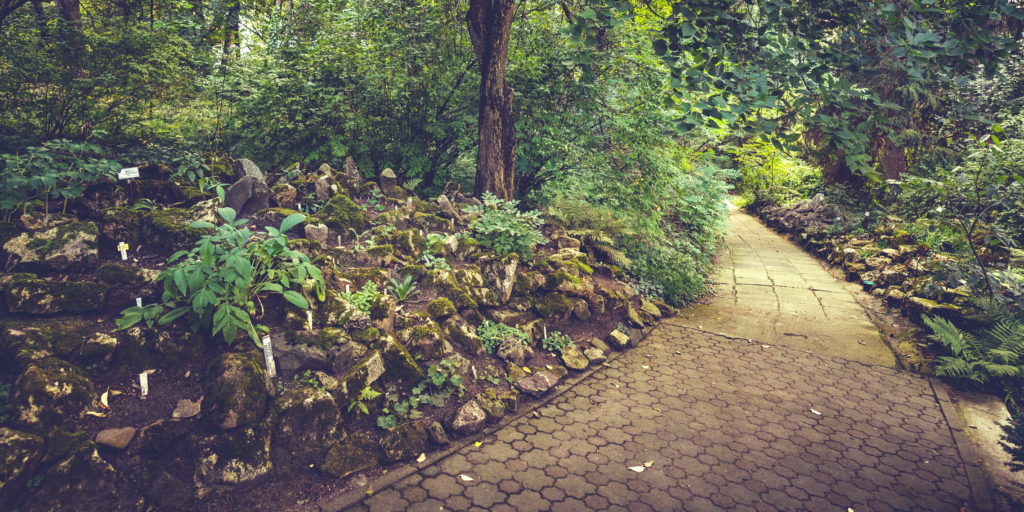The Balkan flora, the European alpine flora and the Mediterranean flora

The path to the large greenhouses is bordered on the left side by the sweet chestnut (Castanea sativa), which grows subspontaneously in Romania (in Tismana and Baia Mare), and on the right side by the rockery that showcases the Balkan flora, with the Greek fir (Abies cephalonica) and the Serbian spruce (Picea omorika) endemic to the Balkans. The silkvine, Periploca graeca, a Balkan species that grows in Dobrudja. The ornamental shrub Cotinus coggygria (the smoketree) also grows in this area. Herbaceous plants growing on this rockery include the Mount Olympus St. John’s wort (Hypericum olympicum), several mini carnations, of which the only yellow carnation (Dianthus knappii), Achillea serbica (the Serbian yarrow), Campanula justiniana (the Justin’s bellflower), all endemic to the Balkans.
The European alpine flora is found on a large rockery, in front of the Aquarium Greenhouse. It includes species endemic to the Alps, Pyrenees, and Apennines mountain ranges. Here you can admire: Globularia punctata and G. incanescens, Primula auricula (the mountain cowslip), beautiful carnations – Dianthus gratianopolitanus, D. pyrenaicus, D. monspessulanus, Allium pyrenaicum (an onion species), the majestic Asphodelus fistulosus and A. albus, etc.

The Mediterranean flora is showcased on two rockeries, in front of the entrance to the large greenhouses. The woody or bushy plants include the bay laurel (Laurus nobilis), the common holly (Ilex aquifolium) and other species that are taken out of the greenhouses only during summer: the evergreen oak (Quercus ilex), the myrtle (Myrtus communis), the oleander (Nerium oleander), and the only spontaneous palm in Europe, the dwarf fan palm (Chamaerops humilis). The rockery houses other species of dwarf shrubs, many of them aromatic and medicinal herbs: the wild jasmine (Jasminum fruticans), the lavender (Lavandula angustifolia), sage (Salvia officinalis), the lemon balm (Melissa officinalis), the rue (Ruta graveolens), etc. Many other Mediterranean species, which were already cultivated during the time of the ancient Rome, are mentioned in the Roman garden.